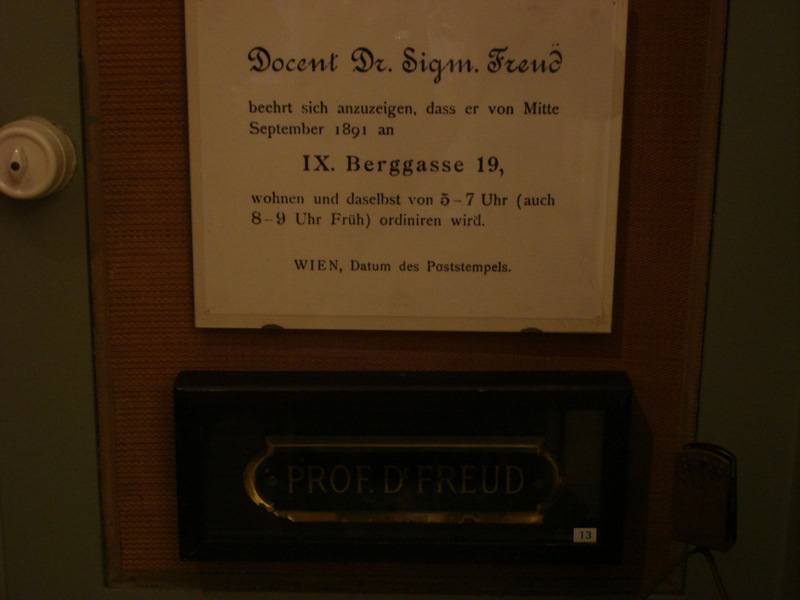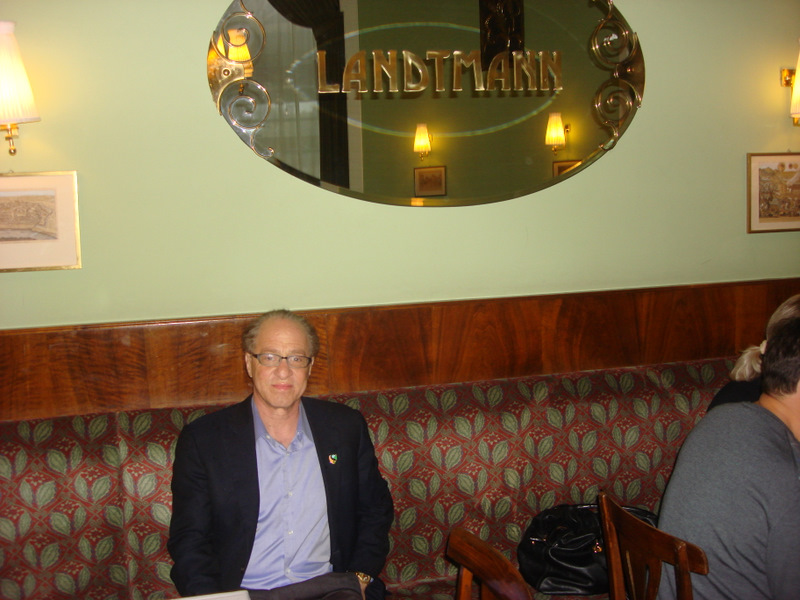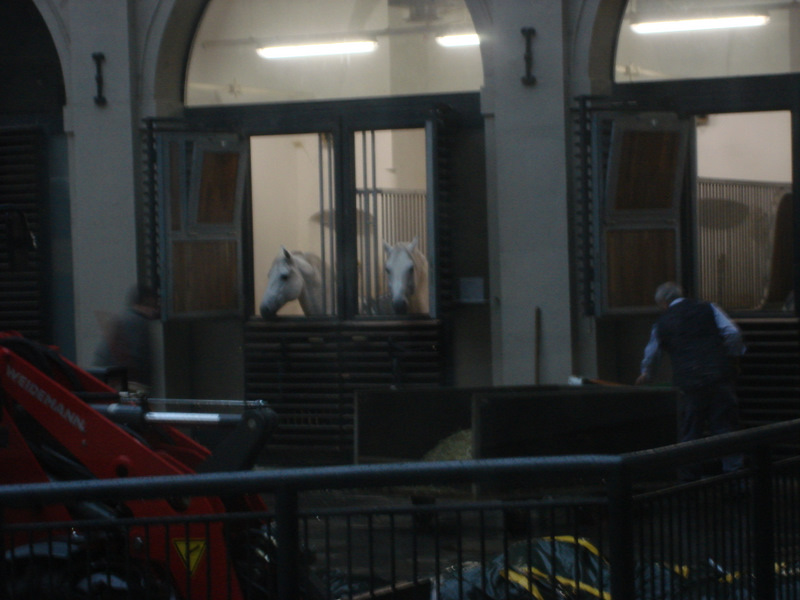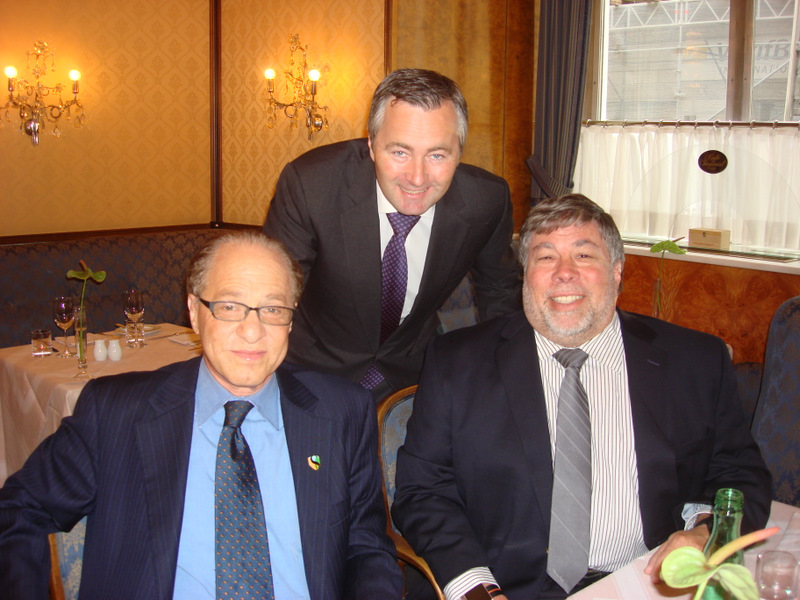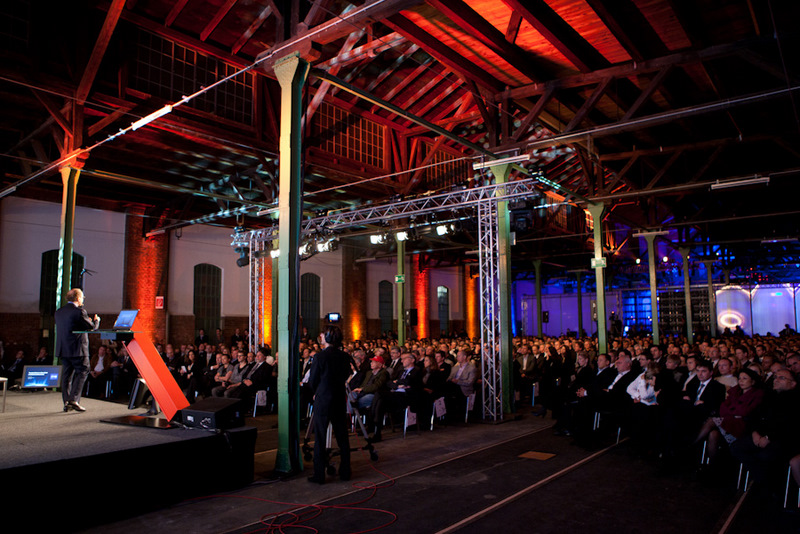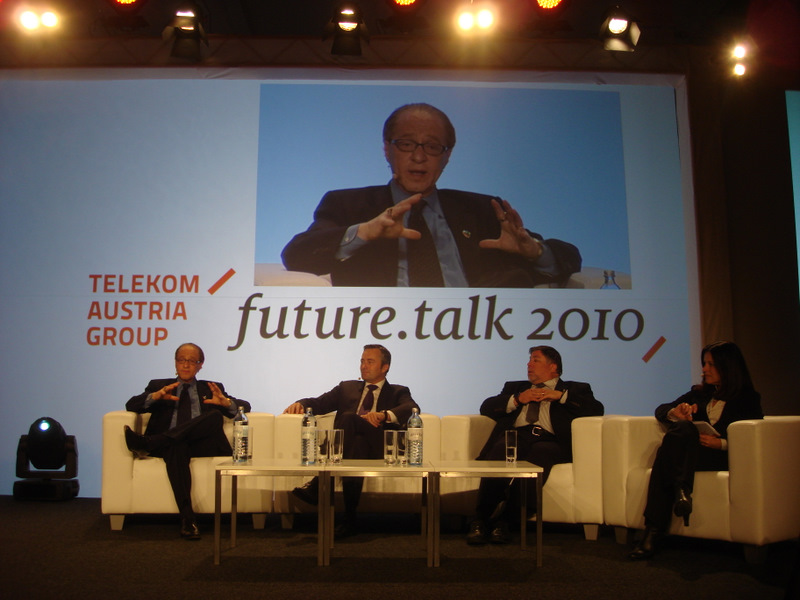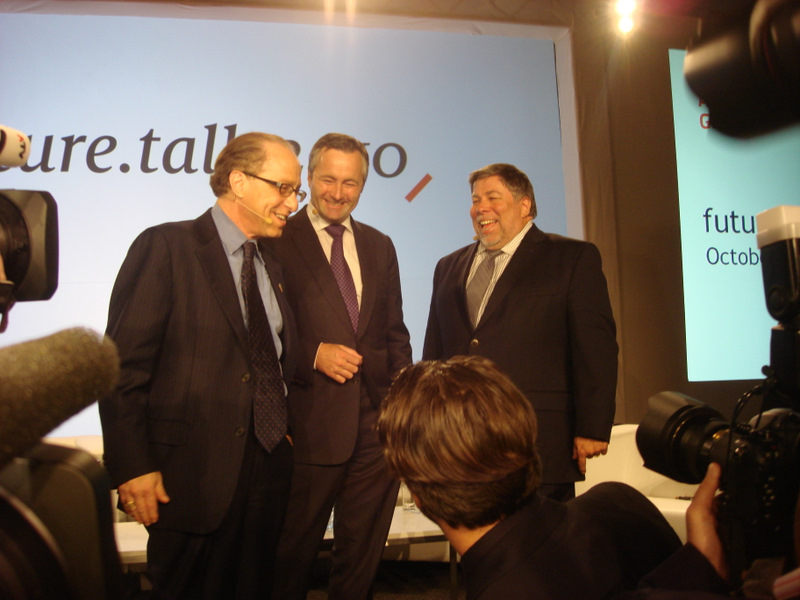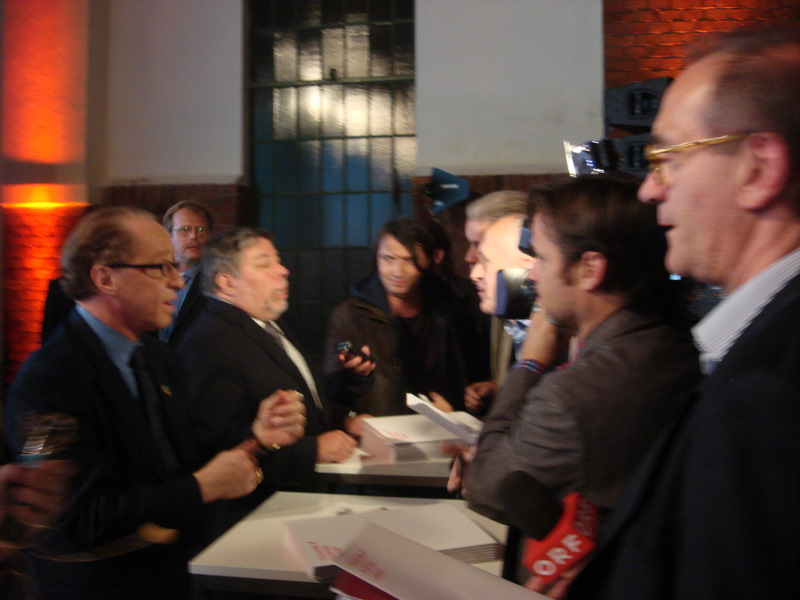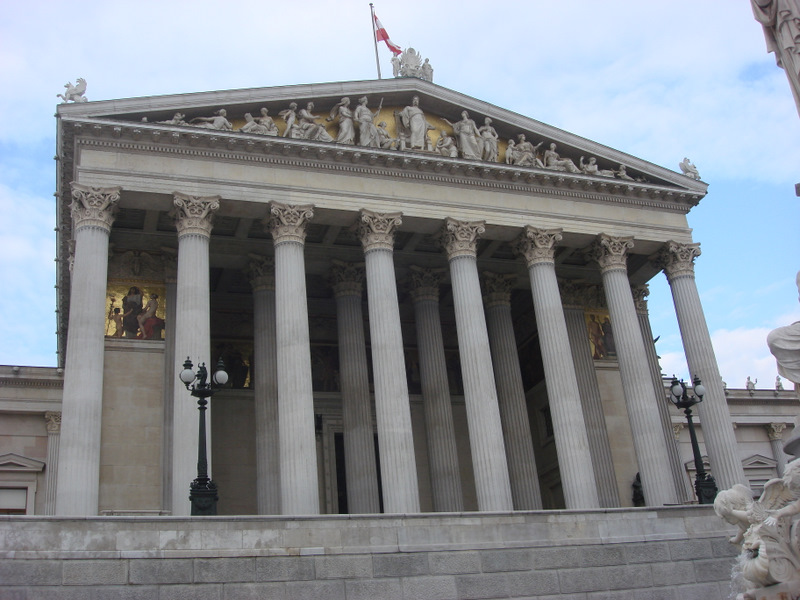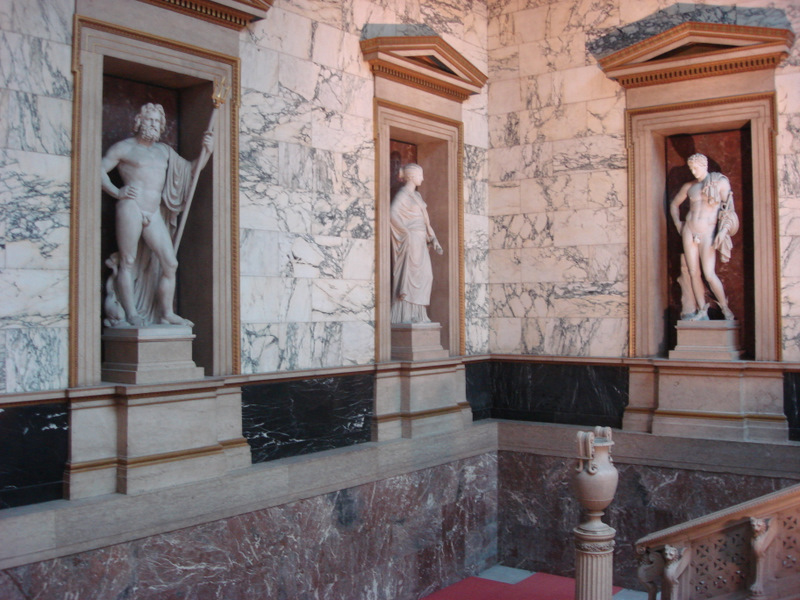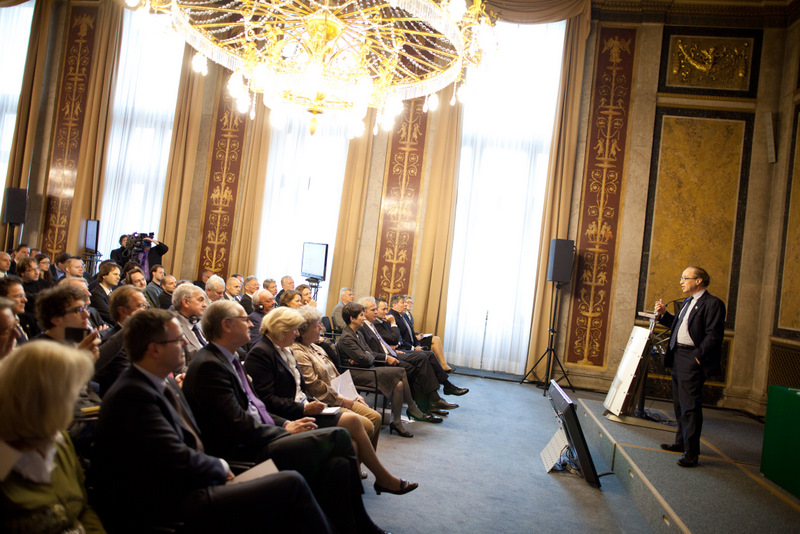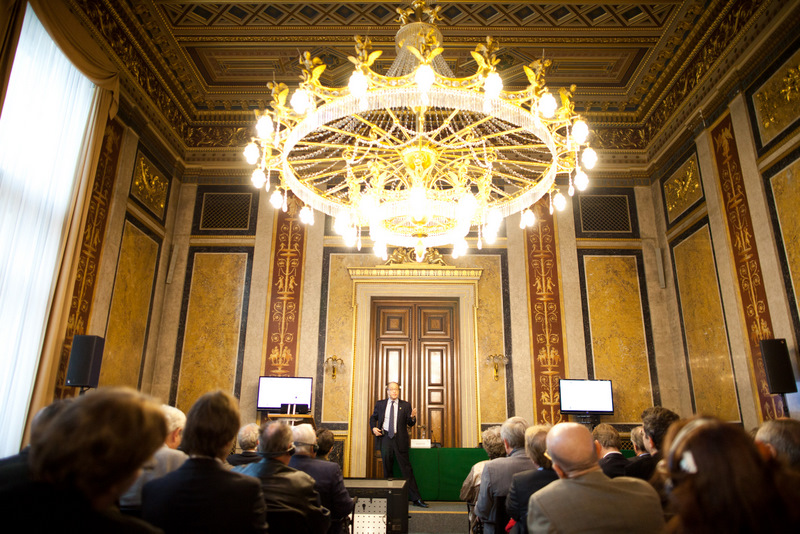memories2010Recollections on my trip to Europe.
January 1, 2010
IMAGE
— contents —
~ memories
~ photos
~ webpages
label |
memories: Recollections on my trip to Europe.
author: by Ray Kurzweil
date: October 2010
memories |
My European trip to:
:: Brussels, Belgium
:: Zurich, Switzerland
:: Warsaw, Poland
:: Vienna, Austria
Recollections from my trip to Europe: October 11 — October 19, 2010. And a personal exploration of my family history in Vienna, Austria.
day 1 ::
location: New York NY • US
date: October 11
I met my daughter Amy for lunch at our favorite salmon restaurant in JFK Airport. This was the 3rd time I’ve done this while en route to Europe. I then flew to Brussels, Belgium — on a red-eye flight.
align=”alignleft” width=”638″]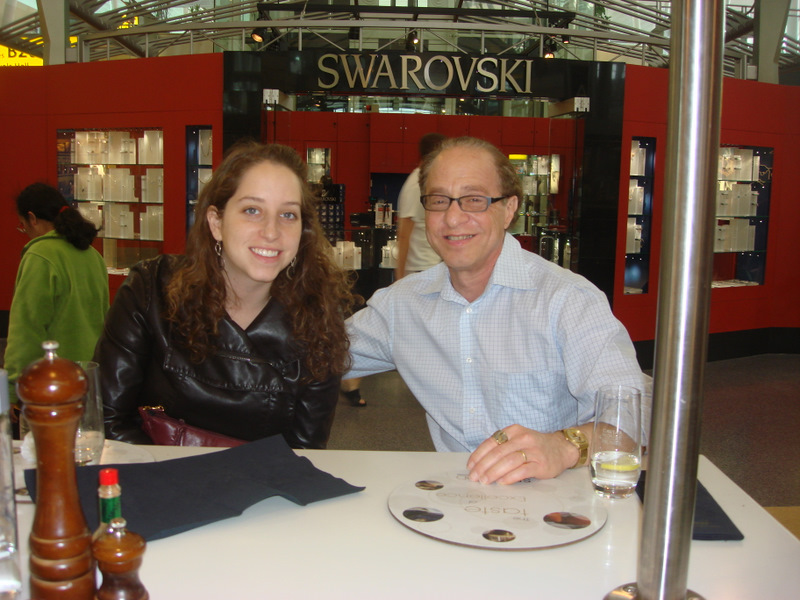
image | above
Amy + I enjoying salmon at JFK Airport.
days 2 — 3 ::
location: Brussels • Belgium
date: October 12 — 13
I gave a keynote address for MIT Europe Conference, an annual conference organized by the MIT Sloan School on “The Democratization of Innovation.” I spoke about today’s environment, where the tools to create and to market disruptive change are in everyone’s hands. The audience was C level management from across Europe. I had press interviews at the conference, including De Tijd, Belgium’s major financial and economics journal.
Zurich, Switzerland :: October 14 — 15
I gave a joint Keynote with John Major (Prime Minister of England from 1990 through 1997) for a conference for leading entrepreneurs and business leaders. These were owners of leading companies in a variety of industries from around the world. My speech was the “The Acceleration of Technology in the 21st Century: The Impact on Entrepreneurs.”
align=”alignleft” width=”638″]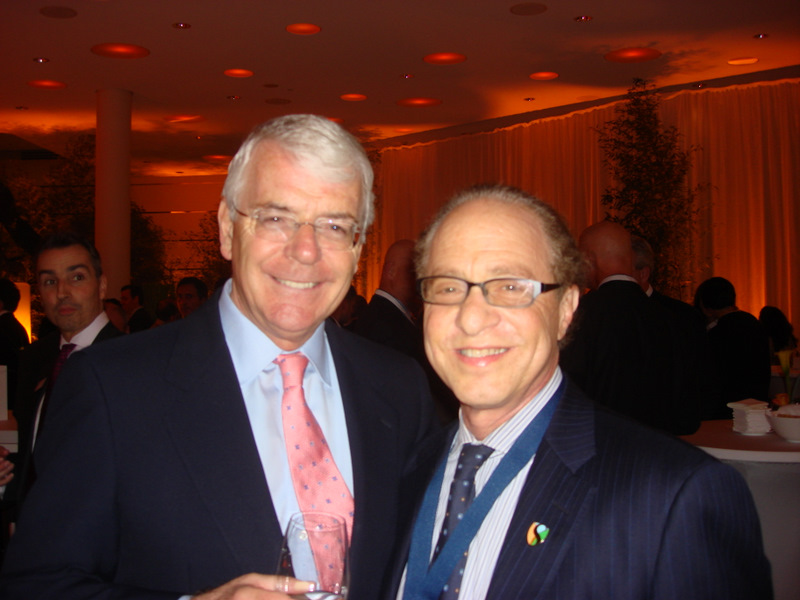
image | above
Former UK Prime Minister John Major and me at the entrepreneurship conference.
I asked 4 questions at the beginning of my speech and then asked the same questions again at the end. Here are the results from audience responses:
1. |
When will computers pass the “Turing test” (that is, when will computer intelligence be indistinguishable from human intelligence)?
– Within 10 years (BEFORE: 31%, AFTER: 21%)
– Within 25 years (BEFORE: 40%, AFTER: 60%)
– Within 50 years (BEFORE: 7%, AFTER: 1%)
– Within 100 years (BEFORE: 1%, AFTER: 3%)
– Never (BEFORE: 21%, AFTER: 15%)
< hr>
2. |
Some people alive today will live for:
:: 120* years -— before 64% ~ after 55%
:: 150+ years -— before 33% ~ after 34%
:: 200+ years -— before 3% ~ after
:: 500* years -— before 0% ~ after 3%
3. |
When will we have desktop “printers” that can “print” any possible three-dimensional object (such as a blouse, a solar panel, a module to build houses)?
:: in 10 years -— before 53% • after 57%
:: in 25 years -— before 18% ~ after 30%
:: in 50 years -— before 11% ~ after 3%
:: in 100 years -— before 11% ~ after 4%
:: never -— before 7% ~ after 6%
< hr >
4. |
Would you eat meat that is made by cloning animal muscle tissue without the use of living animals (assuming that it has been proven safe and is indistinguishable from meat produced from animals)?
:: yes — before 52% ~ after 53%
:: no — before 48% • after 47%
As can be seen from the above results, the group was pretty bullish on human-level AI, with 71 percent believing that this milestone will be achieved within 25 years, rising to 81 percent after the talk.
The percentage believing it will be greater than 10 years but within 25 years (which is my own view) rose from 40 percent to 60 percent.
The group was bullish on the prospects for three-dimensional printers printing “any possible three-dimensional object.” More than half the group believed that we will see this within ten years (my own view is about 20 years). After my speech, 87 percent believed that we will see this within either 10 or 25 years.
John Major, who spoke after I did, was an excellent speaker (he would do well in politics). Both Major and I did an extensive Q&A after our keynotes. Given the nature of the audience, these were confident and thoughtful people with interesting questions.
Major and I had an interesting private conversation that ranged from the influence of the Internet on the democratization in the world that took place during his tenure as prime minister of England in the 1990s, to Gorbachev’s role in the democratization of the nations that comprised the Soviet Union. He was eager to continue our conversation and invited me to have dinner with him the next time I am in London.
day 4 ::
location: Warsaw • Poland
date: October 16
After several press interviews (including Polityka magazine, the leading Polish political and cultural magazine), I attended the third screening of The Singularity Is Near, a True Story about the Future at the Warsaw International Film FestivalThe theater was filled and the audience responded very favorably, laughing and responding at the right places despite the language difference (there were no subtitles). This was followed by an extended (approximately one hour) question and answer period with some very well informed and sophisticated questions.
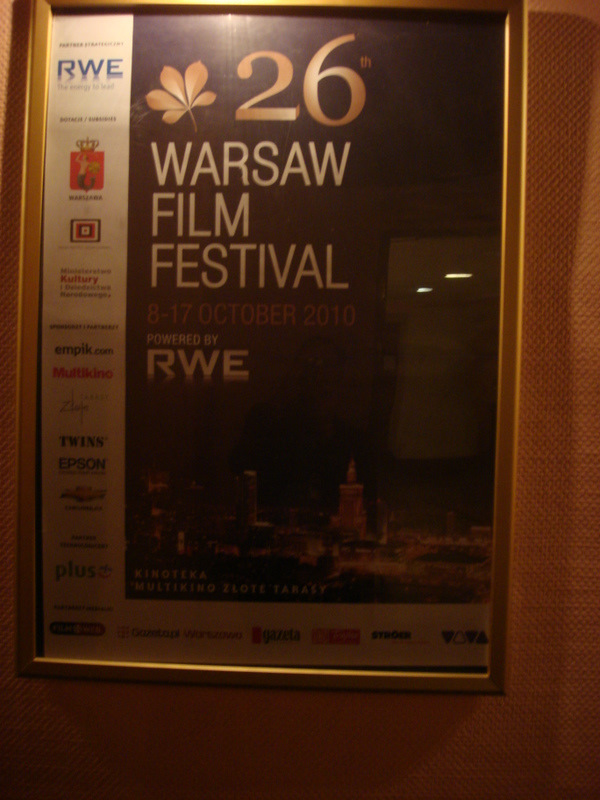
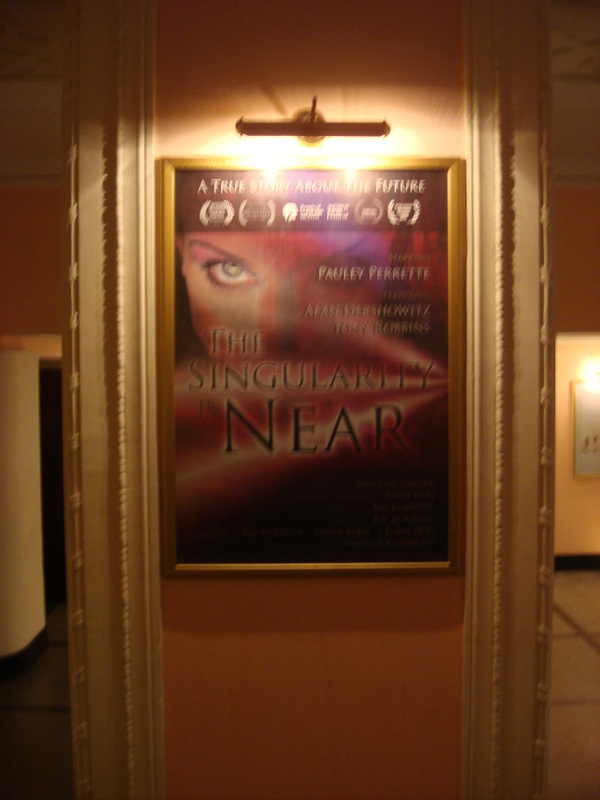
Vienna, Austria :: October 17 – 19
Personal Exploration:
On Sunday, October 17, I engaged a knowledgeable private guide to find some locations of personal importance in terms of my family history.
By way of background, my mother’s mother’s mother and her family (the Stern family) started a school (the Stern Schule) in Vienna in 1868. This school was the first school in Europe to provide higher education (up through “gymnasium,” which is equivalent to the first two years of college) for girls. The school became influential throughout Europe on the issue of education for women. It was run by my great grandmother and then taken over by her daughter, my grandmother.
In March 1938, Hitler came into Austria and annexed it in what has become known as the “Anschluss.” As Hitler entered Vienna, he went directly to the Heldenplatz (Piazza of Heroes) and gave a vintage demonic (and anti-Semitic) speech that has become infamous.
The huge Heldenplatz was completely filled with screaming, hysterical Austrians shouting “Sieg Heil” in response to Hitler, and wildly waving swastikas. Photos and television coverage spread quickly and the world began to learn the true nature of the Hitler phenomenon.
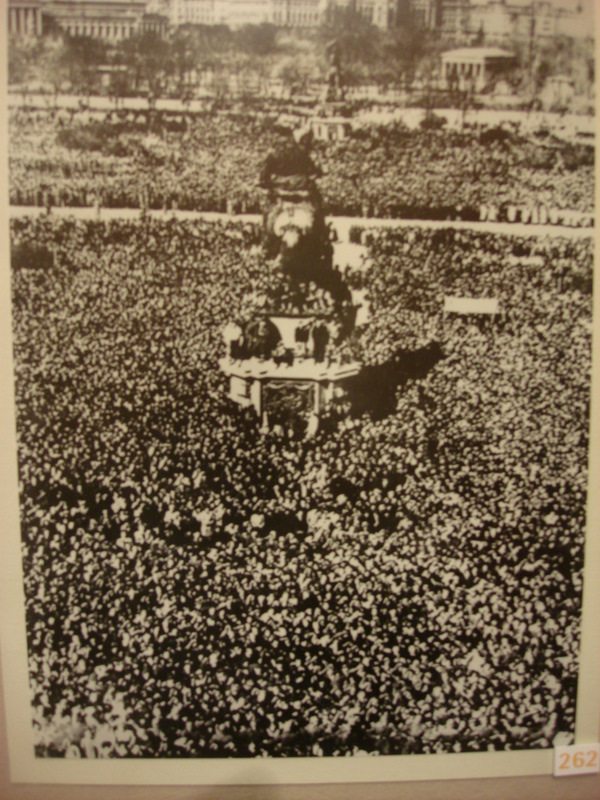
My grandparents decided they would need to leave Vienna and began to make preparations. My grandmother finished the school’s Spring Semester, celebrated the 70th anniversary of the school and fled with my grandfather and their two daughters (my mother and my Aunt Dorit), abandoning the school (and all other possessions). There were many harrowing stories behind this escape during the Summer of 1938. They got out just in time, because November 1938 brought “Krystallnacht,” when all of the Jewish synagogues were destroyed, and it became virtually impossible for Jews to escape.
I was able to find the school (which is no longer a school and now houses professional offices). It was Sunday, so it was locked. But luckily, we were able to find a (very) old woman who let us in. She looked like she was sent from central casting. She told us that “yes, there was a boarding school for girls here before the war.”
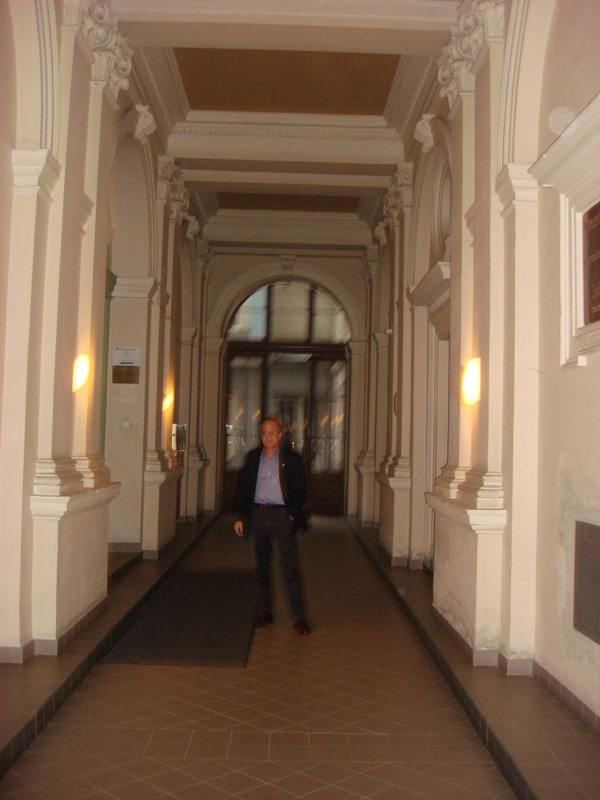
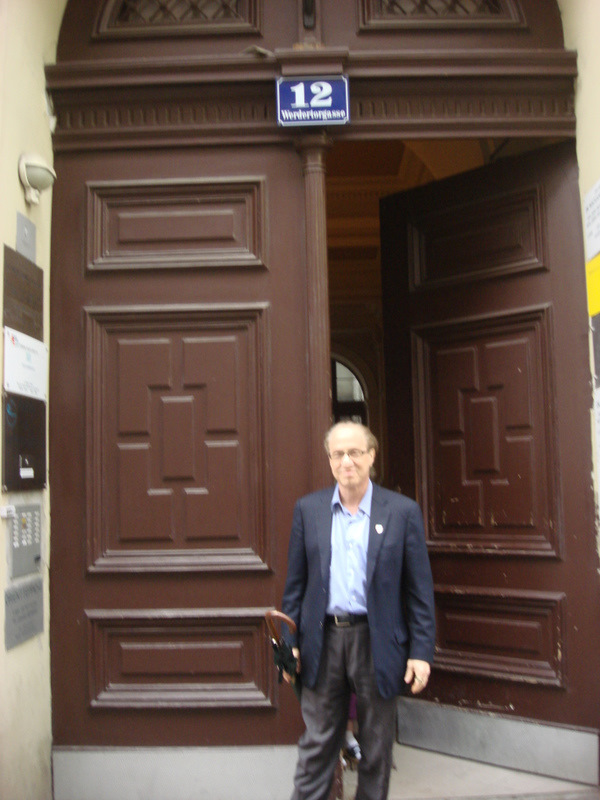
I also found the apartment building where my mother and aunt grew up:
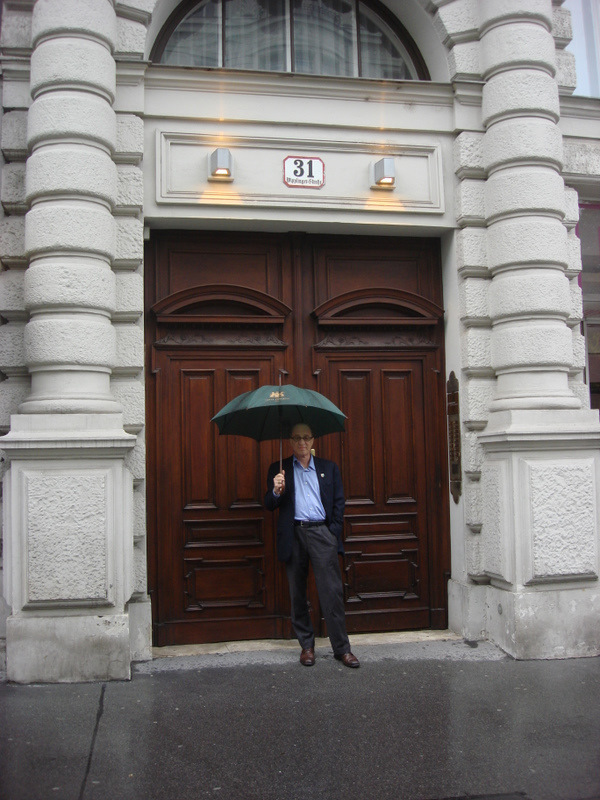
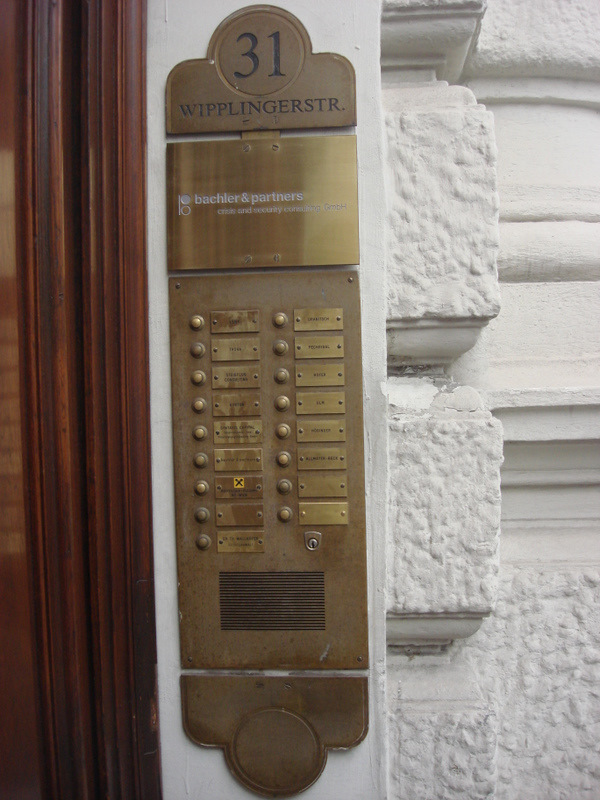
I visited Sigmund Freud’s apartment (and professional office), where he lived from the late nineteenth century to 1938 when he also fled Vienna. I visited the museum that is now located at his apartment.
I visited the Heldenplatz, which is now considerably more placid than it was in March 1938. In the center of this picture, you can see the balcony where Hitler stood when he gave his now infamous speech. No one has given a speech from this balcony since, with the exception of ceremonies dedicated to remembrance of the Jewish victims and advancing reconciliation between the Jewish community and the Austrians (some of which my Aunt Dorit has participated in).
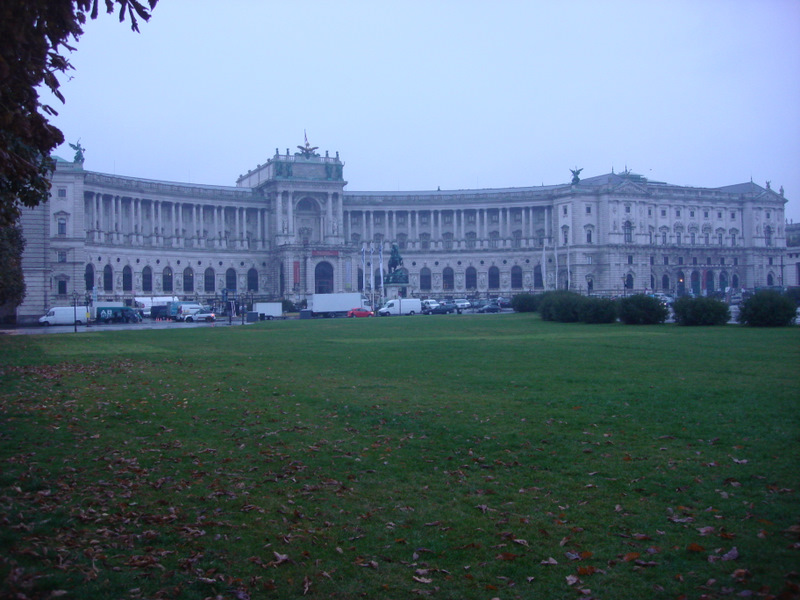
The Heldenplatz. The balcony in the center of the picture is where Hitler gave his famous speech after annexing Austria in March of 1938.
My grandmother was one of the first women in Europe to get a PhD in Chemistry. She wrote an autobiography titled One Life is Not Enough, The memoir chronicles her life, including a fascinating history of the school from the 1890s up through 1938. She wrote the book (on a manual typewriter) in 1948 (the year of my birth) and I make a brief cameo appearance in the last chapter. A German translation of the book will be published in Austria, and we are seeking an American publisher for the English version.
I saw other sights, including the famousLandtmann Café where artists, intellectuals, business people, and politicians have been meeting for about a century.
I passed by the famous Lipizzaner Horses, which have been performing for 400 years (these particular horses are not actually 400 years old, however).
I passed by the remaining fragment of the original ancient city wall. Behind the wall you can see Beethoven’s apartment (on the top floor of the building on the left).
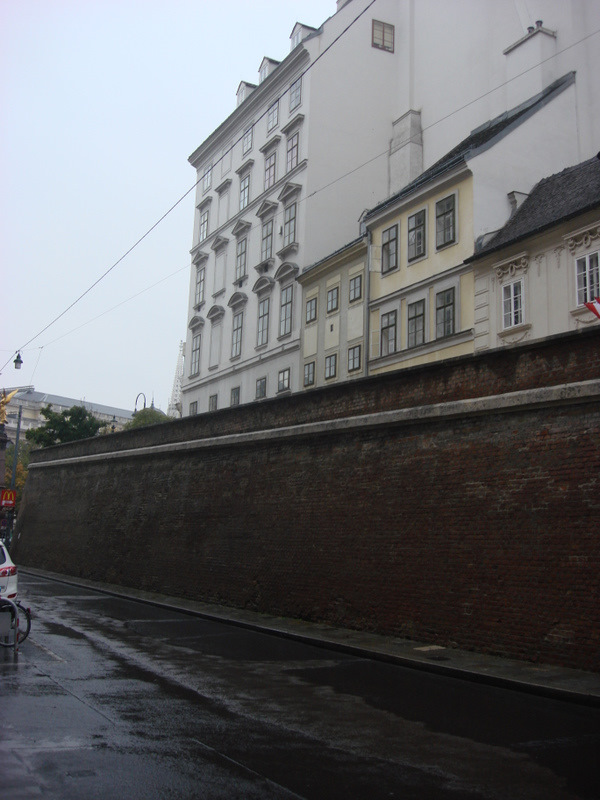
Segways are popular in Vienna.
align=”aligncenter” width=”638″]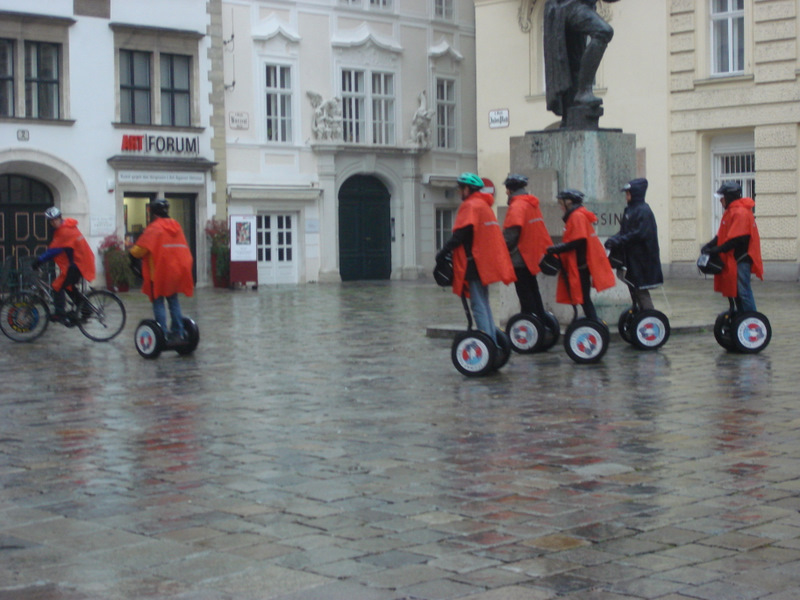
image | above
People on Segways touring Vienna.
Lunch with Steve Wozniak + Austria Telekom CEO.
On Monday, October 18, I had lunch with Steve Wozniak (Apple co-founder) and Hanned Ametsreiter (CEO of Austria Telekom, which is the primary telecommunications company for Austria and 8 other countries in central and Eastern Europe).
This was followed by press interviews with the primary newspapers in Austria, Austria national television, and their public broadcasting radio network.
Presentation for Austria Telekom Employees
We then had the first of three events, a 75 minute session for the employees of Austria Telekom. Steve and I were the two primary speakers. After our speeches, we had an on-stage dialogue with each other and answered questions.
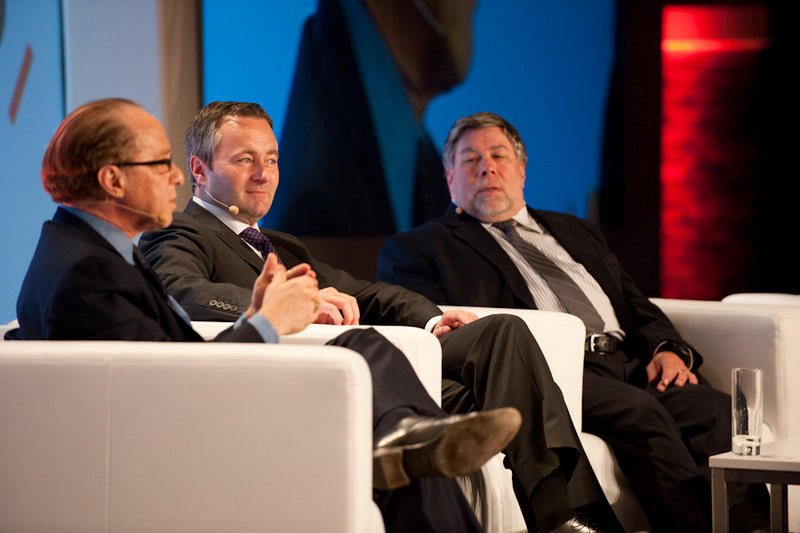
Me, Hanned Ametsreiter (CEO of Austria Telekom) and Steve Wozniak at Austria Telekom Event for Employees.
Main Austria Telekom Event
The main event was in the evening for about a thousand people, which included partners and friends of Austria Telekom plus national leaders from government, industry and press.
The event was held in a nineteenth century tramway depot that had never been used before for this type of meeting. They hired a production company that specializes in creating unusual settings for large meetings. They had to bring in heating and air processing, lighting, water, electricity, and audio/visual support, all of which was quite beautifully done.
The title of the session was “Manchine — from Mankind to Machine.” Steve Wozniak and I gave full keynotes and there was then a moderated discussion between us and Q&A with the audience. The whole thing was very well received. There were extensive interviews after the session with the press who were present. This was followed by an elaborate party with music, food, and drinks.
Speech to the Austrian Parliament
On Tuesday, October 19, the President of the Austrian Parliament, Steve Wozniak and I gave speeches to the Austrian Parliament and other government leaders. Again there was extensive press. Apparently this type of presentation to the Parliament is unusual.
The President of the Parliament is Barbara Prammer, the first woman to have this position. She is the second most powerful person in the government, second to the prime minister. She is also officially the second in command as head of state (after the President). Interestingly, she has played a major role in the process of Austria’s recognizing and coming to terms with its war guilt after decades of denial. She has also been active in building bridges of understanding with the Jewish community. She was aware of my family history and we chatted about this before the session.
Barbara Prammer (President of the Austrian Parliament) and me with Austria Telekom CEO Hannes Ametsreiter in the background.
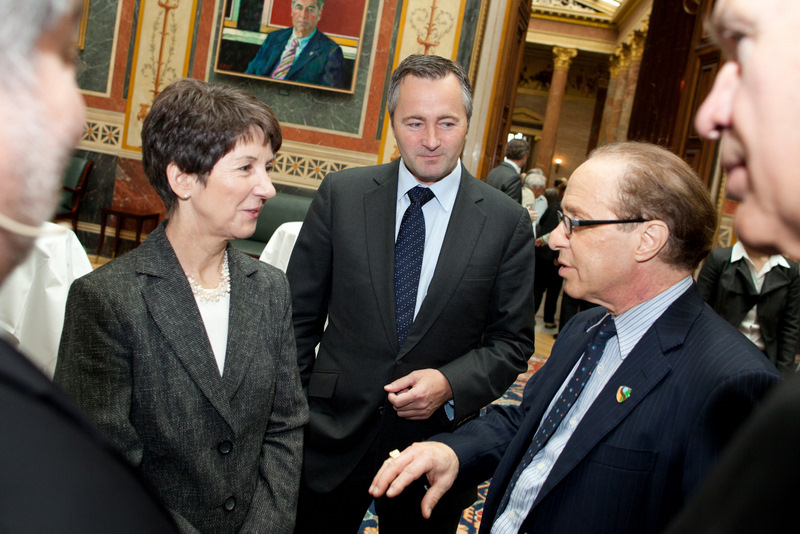
Barbara Prammer (President of the Austrian Parliament) and me with Austria Telekom CEO Hannes Ametsreiter in the background.
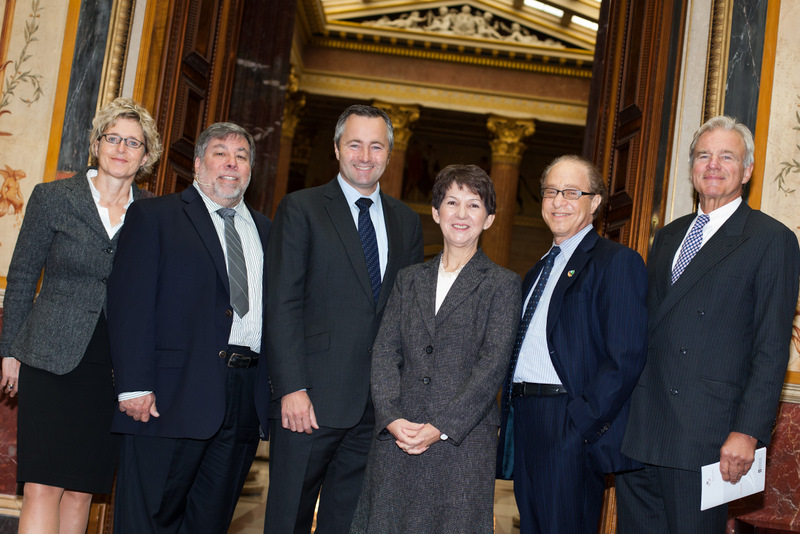
An Austria Telekom official, Steve Wozniak, Hannes Ametsreiter (CEO Austria Telekom), Parliament President Barbara Prammer, me, and Veit Sorger (President of the Industrialists Association of Austria).
Barbara Prammer and Steve Wozniak gave brief speeches and I gave the primary keynote for the presentation to the Austrian Parliament. I spoke at some length about my family history in Vienna.
The Parliament building was built in the 19th century and is quite beautiful. Apparently it was not severely damaged during World War II, as the allies focused their destructive power on Germany.
I had an interview at the airport with the leading newspaper of Austria. I was then escorted right to the plane by being driven across the airport tarmac, similar to the treatment that Sonya and I received in Israel when I spoke at the Presidential Conference.
Then I flew back and wrote these recollections on the plane.
